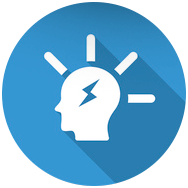 SCIENCE TECHNOLOGY ENGINEERING MATHEMATICS
SCIENCE TECHNOLOGY ENGINEERING MATHEMATICS
Engaging students and Raising Standards
STEM is an educational program developed to enhance the skills of the students for college. STEM goal is to cultivate open minds, well-thought out and cooperative skills.
There are standard of practice or skill sets for teaching science, technology, engineering, and mathematics students:

Problem Solving
Problem Solving
STEM problems require you to quickly work to make sense of problems as they are presented, and work productively to propose real and appropriate solutions.
Creativity
STEM requires the ability to look at and propose solutions to a problem through multiple approaches, including ones that are highly creative or “out-of-the-box.” In STEM, mistakes and failed attempts are positive experiences, offering opportunities for deeper learning.
Inquiry Skills
STEM requires hands-on, active participation to effectively solve problems. Students are the drivers of solutions and should be asking the questions, proposing the ideas, generating and testing solutions, and making decisions based on data to understand how to refine ideas further.
The mathematics and science skills you are learning in school are the foundation of STEM and must be applied in pursuit of solutions. The math and science used to solve problems will connect to and extend your coursework, as well as highlight connections between ideas and subject areas.
Engineering-Design Thinking
In solving STEM problems, the use of engineering-design thinking is vital. In this kind of thinking, you must identify the problem at hand, research potential solutions, build prototypes, test, redesign, test again, and iterate further as needed. Each step in the process moves you closer to creating a functional solution.
Critical Thinking
Big challenges are rarely solved by individuals. Working on STEM problems also involves learning to work as a productive part of a collaborative team.
Why is STEM important?

STEM certainly is a hot topic in education right now, and for good reason. A strong STEM curriculum does more than just focus on skill instruction; it provides learners with an integrated approach that brings together their knowledge from different core areas and allows them opportunities for tangible problem-solving that builds critical-thinking skills. High-quality, interdisciplinary STEM curricula provide valuable opportunities for students to learn and apply 21st century skills like communication, collaboration, critical thinking, and creativity as well as build and strengthen Habits of Mind that will benefit them both in and out of the classroom.

